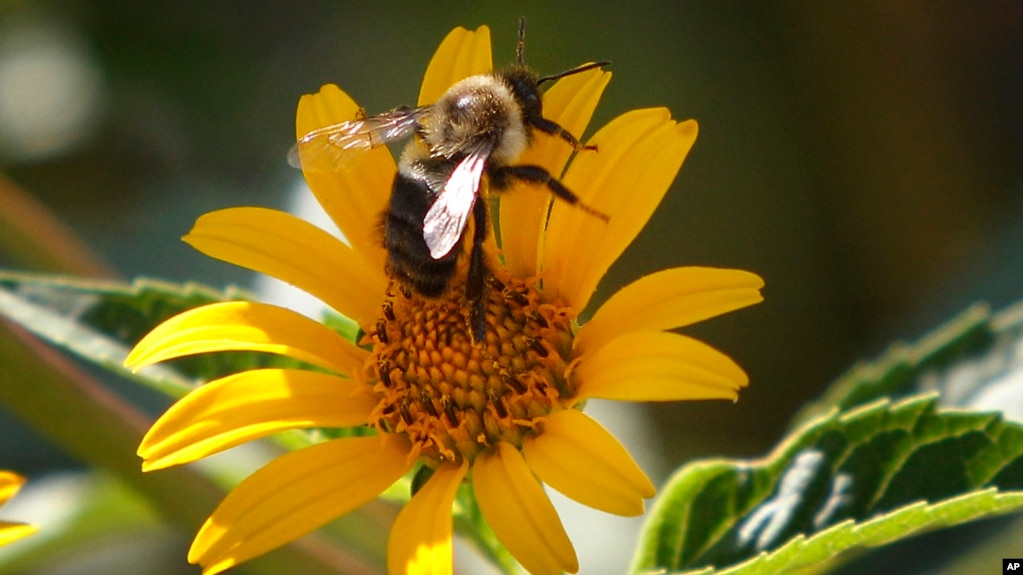
FILE – A bee takes off from the blossom of a yellow daisy flower, Saturday, July 16, 2011 in a garden along the street in Zelienople, Pa.(AP Photo/Keith Srakocic)
And now, Words and Their Stories from VOA Learning English.
On this program we explore words and expressions in the English language.
The natural world gives us many of our expressions — from weather to animals to plant life. Today we talk about a kind of flower.
Fresh as a daisy
Daisies are big, bright, happy-looking flowers. They stand upright on strong stems. So, if we describe someone as being “fresh as a daisy” we mean they seem well-rested and full of energy.
We often say we are fresh as a daisy after resting or getting cleaned up. Here is an example. After an all-day hike, I was very tired. But after a shower and short rest, I felt fresh as a daisy and ready for the next activity.
Looking fresh as a daisy can also describe a place or room that is clean and orderly. For example, after the man cleaned and painted his kitchen, it looked fresh as a daisy.
Upsy-daisy
When a child is learning to walk, they often fall. To encourage them to stand up and try again, we might say “upsy-daisy!” We also might say “upsy-daisy” when we lift a child up. It just sounds cute! Upsy-daisy!
Daisy chain
Speaking of children, a popular activity with some is to connect flowers together, like a chain, and wear them. Because of their strong stems, daisies are commonly used to make “daisy chains.”
A daisy chain can mean any connected events, experiences, happenings, or things. A daisy chain is also used to describe electrical signals that are connected in a system.
Sometimes, this can be used as a verb. When the Internet went down, I had to daisy-chain my phone to a friend’s computer to share some videos.
Pushing up daisies
There is also a strange way we use the flower “daisy.” If someone is “pushing up daisies,” they are, unfortunately, dead and buried. This comes from the fact that wildflowers often grow on top of graves. We may use daisies for this expression because they grow easily and wildly in nature.
It is important to know that we only use this expression informally. Sometimes we use it as a joke. For example, I’ll be pushing up daisies before a time travel machine is invented.
And that’s all the time we have for this Words and Their Stories. Until next time … I’m Anna Matteo.
Anna Matteo wrote this story for VOA Learning English.
_______________________________________________________________
Words in This Story
stem -n. a plant part (such as a branch, petiole, or stipe) that supports another (such as a leaf or fruit)
fresh -adj. newly made or received
hike -n. a long walk especially for pleasure or exercise
chain -n. a series of connected links or rings usually of metal: a series of things joined together as if by link